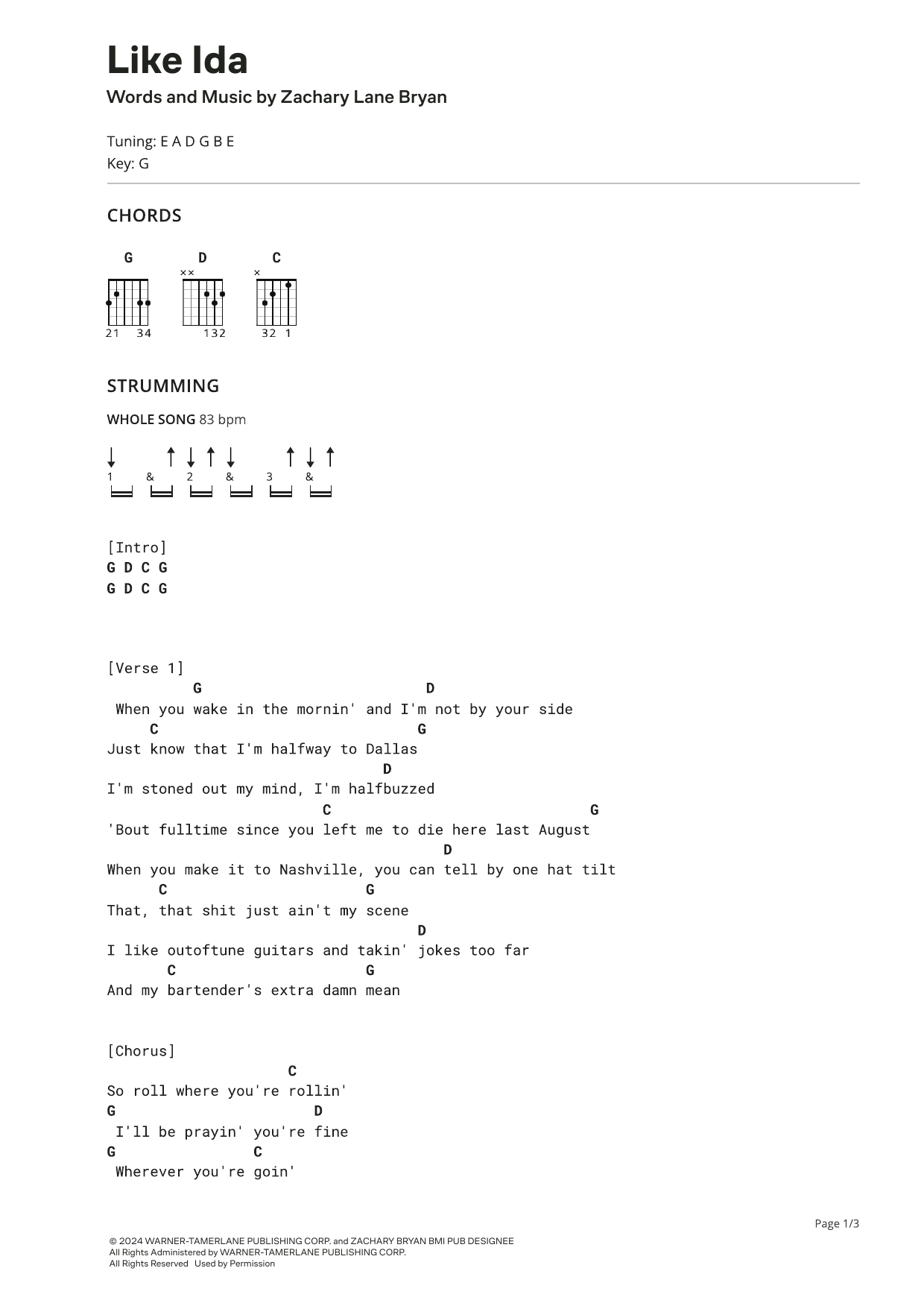Perhaps you've stumbled upon the phrase "ida zach bryan" and found yourself wondering about its meaning, or maybe it just piqued your interest in the vast, often hidden, corners of technology. It's almost as if some words, even if they seem a bit out of place, can spark a curiosity that leads you to discover truly powerful tools. Today, we're going to explore one such tool, a real powerhouse in the world of software analysis, that often comes up in discussions about deep technical insights: IDA Pro. This amazing piece of software is, you know, a cornerstone for folks who look closely at how programs actually work, right down to their core.
For anyone keen on understanding the intricate inner workings of computer programs, IDA Pro, or the Interactive Disassembler, is a name that really stands out. It's basically a go-to tool for reverse engineering, helping people pick apart compiled software to see what makes it tick. This can be for, say, spotting sneaky viruses, figuring out security weaknesses, or even just learning how a complex piece of code does its job. It's a bit like having X-ray vision for software, allowing you to see the assembly language instructions that make up a program.
Over the years, IDA Pro has seen many updates and versions, each bringing new capabilities and refinements. We've seen, for instance, the journey from earlier builds to more recent releases, with users always looking for the latest and greatest features. This tool, quite frankly, helps a lot of people in various fields, from cybersecurity pros to competitive programmers in CTF events, basically getting a handle on digital puzzles. So, let's take a closer look at what makes IDA Pro such a significant player in the digital landscape, and what its different versions and features actually offer.
Table of Contents
- The Evolution of IDA Pro: From Classic to Current
- IDA Pro and the Rise of AI in Reverse Engineering
- Getting Started with IDA Pro for Beginners
- Understanding IDA Pro's Validation Process
- Frequently Asked Questions About IDA Pro
The Evolution of IDA Pro: From Classic to Current
The journey of IDA Pro has been quite interesting, with various versions popping up that cater to different needs and user preferences. It's really something to see how a tool like this grows and changes over time, too. For instance, many folks who have used IDA Pro for a while might recall working with older versions, like IDA 7.7. That was a solid tool for its time, but, you know, technology moves pretty fast, and people always want to keep up with the latest advancements.
Moving forward, we've seen releases like IDA Pro 9.0.241217 SP1, which represents a more recent iteration. Updating to these newer versions can sometimes be a bit of a process. Users, for example, might successfully install and patch the software, but then run into challenges with getting their IDAPython environment or various plugins set up just right. It's a common hurdle, really, for anyone dealing with complex software updates. Making sure all the pieces work together smoothly is, arguably, a key part of using these powerful tools effectively.
Then there's the story of IDA Pro 8.3, which gained quite a bit of attention as a "green version." This particular release, created by community members like @Hmily, @微笑一刀, and @云在天, was based on a leaked Windows version of IDA Pro 8.3. What made it pretty neat was its ease of use; you could simply unpack it and then run a "greening tool" to get it ready to go in just one step. This kind of community effort, you know, often makes powerful software more accessible to a wider audience, which is always a good thing.
Different versions often bring different features and improvements. For example, if you look at the official Hex-Rays website, you can see how versions like IDA Pro 8.4 introduced various updates. These updates are pretty important, as they can bring new analysis capabilities, improve performance, or even just make the user experience a little smoother. Keeping up with these changes is, basically, how users make sure they're getting the most out of their software analysis efforts. You can often find detailed information about what's new directly from the developers, which is really helpful.
There have also been discussions and releases of development versions, like IDA Pro 9.0 RC1 (Release Candidate 1) and even official leaked Beta versions for various platforms including Windows, Linux, and Mac. These often come with all the decompilers and SDKs, and, you know, folks in the community work on creating patches and making them available. This continuous cycle of development and community involvement really shows how dynamic the world of software analysis truly is. It's a constantly evolving space, and, you know, that's part of what makes it so interesting.
IDA Pro and the Rise of AI in Reverse Engineering
The field of reverse engineering, which is already pretty complex, is getting a huge boost from artificial intelligence, and tools like IDA Pro are right there in the middle of it all. It's truly amazing, you know, how AI is changing so many different areas, and software analysis is definitely one of them. For a long time, looking at tricky assembly code in CTF (Capture The Flag) challenges or during malware analysis could feel, well, a bit overwhelming. You might even feel like giving up, just a little.
But things are, frankly, changing quite a bit. The idea that "AI can reverse engineer for you!" is becoming more and more real. We're seeing tools like IDA Pro, when paired with AI capabilities such as MCP (which seems to be quite popular right now), really transform the way people work. Imagine, for instance, having an intelligent assistant that can help you make sense of those bewildering lines of code. It's a powerful thought, really, and it's making the process much more approachable for many.
The concept of using IDA Pro with something like MCP + AI to create a smart reverse engineering workflow is, honestly, a big deal. People are talking about it a lot, and it's seen as a pretty advanced way to approach these tasks. It's like, you know, AI is truly changing the world, and this is just one more example of its impact. There's a lot of excitement around how these new capabilities can help people who might not be seasoned experts to still get valuable insights from complex software. It's pretty cool, if you ask me.
The popularity of tools like MCP, and even its counterpart GhidraMCP for the Ghidra disassembler, shows a clear trend. People are really keen to adopt these new "advanced production forces," as some might call them. It's all about making the difficult task of reverse engineering a bit easier and faster, using the smarts of AI. This means less time scratching your head over obscure code and more time actually understanding what's going on inside a program. So, it's a very exciting time for anyone involved in this kind of work, you know, with all these new possibilities emerging.
Getting Started with IDA Pro for Beginners
If you're just starting out in the world of reverse engineering or software analysis, IDA Pro can seem a bit intimidating at first glance. It's a very powerful tool, and, you know, like any powerful tool, it has a lot of features and options that can take some getting used to. But don't worry, it's actually quite manageable to begin learning the basics. This part is, frankly, for those who are just dipping their toes into the water, while the seasoned pros might already know all this.
At its core, IDA Pro is a static analysis tool. What this means is that it looks at the program's code without actually running it. It's like reading a blueprint of a building rather than walking through the building itself. This approach is, basically, really good for understanding the structure and logic of a program without risking any unintended side effects that might come from executing unknown code. It gives you a safe space to explore.
IDA Pro is widely used for a bunch of different purposes. For example, it's a staple in virus analysis. When new malware pops up, security researchers often use IDA Pro to dissect it, figure out how it works, what it's trying to do, and how to stop it. This is, quite frankly, a critical part of keeping our digital world safe. It helps people understand the bad stuff so they can build better defenses, you know, which is pretty important.
Another big area where IDA Pro shines is in competitive programming events, specifically in categories like CTF (Capture The Flag) challenges that involve "reverse engineering" (RE) and "pwn" (exploitation). In these challenges, participants are given a compiled program and need to figure out its secrets, find vulnerabilities, or extract hidden information. IDA Pro provides the tools needed to break down these challenges, making it an essential companion for many competitors. It's almost like a detective's magnifying glass for digital mysteries.
The tool also plays a crucial role in general software analysis. Whether you're trying to understand how a legacy system works without source code, or just curious about how a particular application functions, IDA Pro can give you a deep look. It helps you see the flow of control, identify functions, and understand data structures, which is, you know, pretty much everything you need to know about a program's inner workings. So, for anyone wanting to truly understand software, this tool is, arguably, a must-have.
Understanding IDA Pro's Validation Process
For any powerful software, especially one used in sensitive areas like cybersecurity, having a solid validation or licensing process is pretty important. IDA Pro is no exception, and its validation process follows, you know, a fairly standard set of steps. It's all about making sure that the software you're using is legitimate and properly licensed, which, as a matter of fact, helps support the developers who create these complex tools.
The way IDA Pro typically verifies its license involves a few key cryptographic operations. Basically, it takes the "payload" object from a JSON structure found in a keyfile. This payload, which is essentially a string of data, then gets a SHA256 hash calculated from it. SHA256 is a type of cryptographic hash function, and it creates a unique, fixed-size string of characters from any input data. It's like a digital fingerprint, you know, that helps confirm the integrity of the data.
Then, there's a "signature" object, which is usually a hexadecimal (HEX) string. This signature is, in a way, like a digital seal. The software uses a public key, which consists of two values, 'N' and 'e', to decrypt this HEX string. Public key cryptography is a very common method for secure communication and verification. It's pretty clever, really, how it all works together to ensure authenticity. Once decrypted, the software compares the result with the SHA256 hash calculated earlier.
If the decrypted data matches the calculated SHA256 hash, then the validation is successful. This confirms that the keyfile is authentic and hasn't been tampered with. It's a pretty robust system, designed to prevent unauthorized use and ensure that users have a genuine copy of the software. This kind of security measure is, you know, just part of how high-end software protects its intellectual property and ensures a fair playing field for everyone. So, it's a very important part of the whole system, honestly.
Frequently Asked Questions About IDA Pro
What is IDA Pro primarily used for?
IDA Pro is primarily used for static analysis of compiled software, which means it examines programs without running them. It's a very versatile tool, used extensively in areas like virus analysis, finding security vulnerabilities, and for solving challenges in competitive programming events such as CTF (Capture The Flag) where reverse engineering skills are needed. It helps you, you know, basically see the hidden code and understand how a program functions at a very deep level.
How does AI assist with reverse engineering using tools like IDA Pro?
AI is beginning to make reverse engineering much more accessible and efficient. When integrated with tools like IDA Pro, AI can automate complex tasks, help identify patterns in code, and even suggest interpretations of functions or data structures. This can, for instance, significantly reduce the time and effort required for manual analysis, making it easier for people to understand complicated assembly code. It's like having a smart assistant, you know, that helps you figure out the tricky bits.
Are there different versions of IDA Pro, and what are the main differences?
Yes, there are many different versions of IDA Pro, with new ones released regularly, such as IDA Pro 8.3, 8.4, and 9.0. Each new version typically brings improvements in analysis capabilities, support for new architectures, better decompilers, and general performance enhancements. The main differences usually involve updated features, bug fixes, and compatibility with newer operating systems or programming languages. Sometimes, community-made "green versions" also appear, which are, you know



